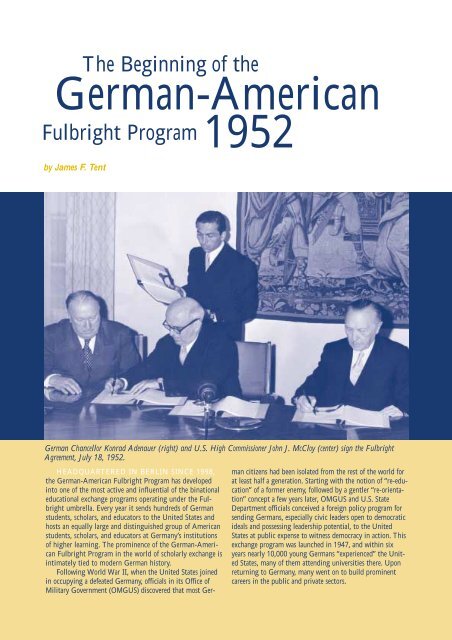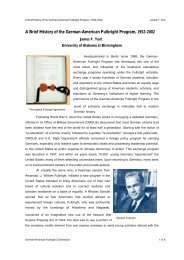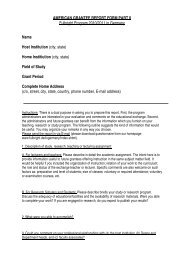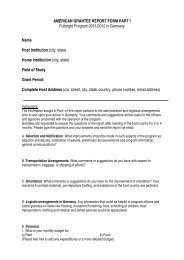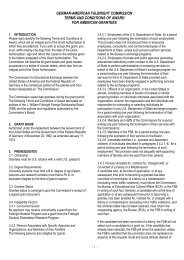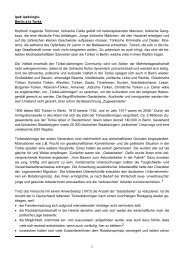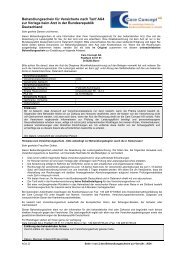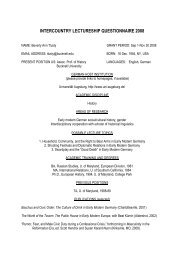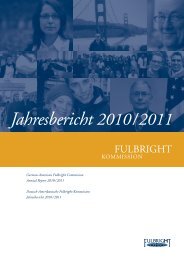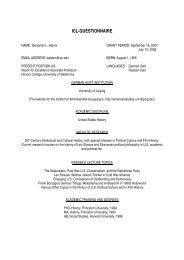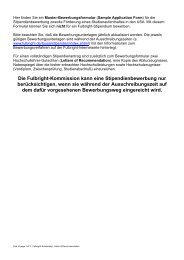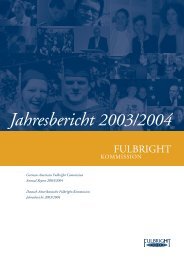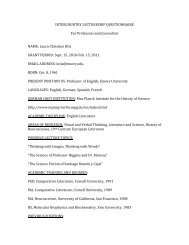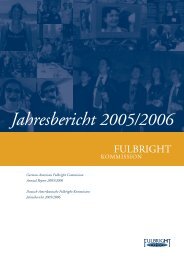The First Class of Fulbrighters - Fulbright-Kommission
The First Class of Fulbrighters - Fulbright-Kommission
The First Class of Fulbrighters - Fulbright-Kommission
You also want an ePaper? Increase the reach of your titles
YUMPU automatically turns print PDFs into web optimized ePapers that Google loves.
<strong>The</strong> Beginning <strong>of</strong> the<br />
German-American<br />
<strong>Fulbright</strong> Program 1952<br />
by James F. Tent<br />
German Chancellor Konrad Adenauer (right) and U.S. High Commissioner John J. McCloy (center) sign the <strong>Fulbright</strong><br />
Agreement, July 18, 1952.<br />
HEADQUARTERED IN BERLIN SINCE 1998,<br />
the German-American <strong>Fulbright</strong> Program has developed<br />
into one <strong>of</strong> the most active and influential <strong>of</strong> the binational<br />
educational exchange programs operating under the <strong>Fulbright</strong><br />
umbrella. Every year it sends hundreds <strong>of</strong> German<br />
students, scholars, and educators to the United States and<br />
hosts an equally large and distinguished group <strong>of</strong> American<br />
students, scholars, and educators at Germany’s institutions<br />
<strong>of</strong> higher learning. <strong>The</strong> prominence <strong>of</strong> the German-American<br />
<strong>Fulbright</strong> Program in the world <strong>of</strong> scholarly exchange is<br />
intimately tied to modern German history.<br />
Following World War II, when the United States joined<br />
in occupying a defeated Germany, <strong>of</strong>ficials in its Office <strong>of</strong><br />
Military Government (OMGUS) discovered that most Ger-<br />
man citizens had been isolated from the rest <strong>of</strong> the world for<br />
at least half a generation. Starting with the notion <strong>of</strong> “re-education”<br />
<strong>of</strong> a former enemy, followed by a gentler “re-orientation”<br />
concept a few years later, OMGUS and U.S. State<br />
Department <strong>of</strong>ficials conceived a foreign policy program for<br />
sending Germans, especially civic leaders open to democratic<br />
ideals and possessing leadership potential, to the United<br />
States at public expense to witness democracy in action. This<br />
exchange program was launched in 1947, and within six<br />
years nearly 10,000 young Germans “experienced” the United<br />
States, many <strong>of</strong> them attending universities there. Upon<br />
returning to Germany, many went on to build prominent<br />
careers in the public and private sectors.


